[Katie Schumacher, Wisconsin Historical Museum]
Today we are pleased to introduce Susan Caya-Slusser as part of the Wisconsin Historical Museum’s “History Sandwiched In” lecture series.
Susan began working at Villa Louis as a historic interpreter in 2000 and was inspired to go into the museum field. After receiving a degree in Public History from UW-Whitewater and a Master’s in American History from UW-Eau Claire, she began a full-time career at Villa Louis as curator in 2007. And she took the position as Villa Louis Site Director in 2013.
It seems that Susan has come full circle for her family as her great-great-grandfather Michael
[Susan Caya-Slusser, Director, Villa Louis]
Michel
[Katie Schumacher]
Michel Caya worked for Hercules Dousman, transporting mail and supplies between St. Paul, Minnesota, and Prairie du Chien. So, here today to take us on a little culinary tour of the late 19th century with menus and recipes from the Dousman family, please join me in welcoming Susan Caya-Slusser.
[applause]
[Susan Caya-Slusser, Director, Villa Louis]
Well, good afternoon. A great showing, but I think every time you have food, people show up. So, thank you for joining me during your busy schedule.
So, welcome to Villa Louis. And our tag line is Enter the World of Victorian America. And let me ask the crowd real quick, who’s been to Villa Louis before?
A great number of you have. That’s excellent. But, part of my presentation is just to take people back to Prairie du Chien. We’re located on the – just north of the confluence of the Wisconsin and Mississippi Rivers, and that’s why Prairie du Chien is such an important location for the state of Wisconsin and really lended to the formation of the state.
[exterior photo of Villa Louis]
Here we have a spring photo of the Villa Louis.
But our main time period, our main focus for Villa Louis, if you’ve been there and been on the tour, is the 1890s. It’s the most well-documented time period of the family in Prairie du Chien.
But the time of the Dousmans in Prairie du Chien goes back to an earlier date. It starts with Hercules Dousman.
[photos of Hercules and Jane Dousman]
And Hercules, here on the left, is a fur trader that comes down from Mackinac Island in 1826, working for John Jacob Astor’s American Fur Company. He quickly works his way up through the ranks and becomes part owner of the company, and really starts to amass quite a fortune off of early industry of Wisconsin: with transportation, investing in stocks, and investing in the railroad that came to Prairie du Chien from Milwaukee in 1857.
He marries his wife, Jane Fisher Rolette, in 1844.
[photo of the first Dousman Grand Mansion]
And as many of you may know, that the home that you toured today, the Villa Louis, the mansion that stands today, is not the first family home. Hercules built a grand mansion, as you see in this photograph taken around 1853, on the same location where Villa Louis stands today. But between the years 1850 and 1860 is when Hercules Dousman really amasses quite a fortune. When he does pass away in 1868, he does not have a will, and his estate goes through probate. And Hercules Dousman in 1868 is worth about $940,000. That’s really hard for us to wrap our head – heads around how much money that is during that time period.
Like I said, he’d made money off of land, off of shipping, off of the railroad, but mainly land speculation. That is what makes this family wealthy.
[slides of Hercules Louis Dousman II and his wife, Nina]
Fast forward to 1873. And Hercules and Jane would have one son, Hercules Louis Dousman II, always referred to as Louis. And here we have a wedding photograph of Louis and his beautiful wife, Nina Sturgis Dousman, and a photograph of Nina in her wedding dress. They were married in November of 1873, up at the cathedral in St. Paul, Minnesota.
Now, as a young man, Louis, coming into all this wealth as a young man of about the age of 21, really wanted a home to show off the wealth, show off the status of the Dousman family. So, he tore down that first home that was referred to as the Brick House on the Mound, and made way for Villa Louis, which stands right in the same location. And this home was finished in January 1871 at the mere cost of $25,000 in that year.
And we always like to mention on tour, the company that built this home, the architectural firm, was out of Milwaukee, the Bentley Company, and they’re still in business today. It’s kind of a testament to the construction of this home.
[slide of interior of remodeled 1885 Villa Louis]
Now, Mrs. Dousman, Nina Dousman, you know, she’s moving into her mother-in-law’s home, and, like any fashionable lady, wants to add her own sense of flair and style to the home. And she hires an interior decorator from Chicago, Joseph Twyman, who’s an agent for William Morris, and the house goes under this complete re-decoration because they are now turning the estate into a working horse farm. They are racing and breeding horses; the newly certified Standard Bred trotting horse. Quite a lot of work went into the re-formatting of this estate to support the racing and breeding of horses. Unfortunately, it was only a short-lived venture. Louis Dousman died at the young age of 37 from what we believe to be appendicitis.
[slide of Mrs. Dousman hosting a house party]
Mrs. Dousman briefly remarries. It’s not a successful second marriage. And when she comes back after divorcing her second husband, when she comes back to Prairie du Chien in the 1890s, we see a lot of activity taking place in Prairie du Chien.
She considered it to be her country estate. She traveled quite extensively, but always came back to Prairie du Chien. And the height of entertaining in Prairie du Chien for this family was August and September. So, we see these large house parties taking place. That’s exactly what’s happening in this photograph in August of 1898. You see Mrs. Dousman sitting there, taking part in the games that the family are playing, and the oldest daughter, Violet, in that picture, standing there with some of her suitors all around. House parties, what better way to find prospective husbands than through these house parties?
[laughter]
They weren’t just an overnight stay or a weekend stay. During this house party in August of 1898, the gentlemen were in town for about a week, and some of the ladies were in town for about two weeks.
[slide of outdoor gathering at Villa Louis in the 1800s]
And here we see that same house party group gathered around the artesian fountain playing cards. Of course, Mrs. Dousman, seated at the table, always partook in all of the activities with her young guests.
[slide of women and gentlemen playing golf at Villa Louis]
Golf, very active family. Now we like to think that the Victorian rules during that time period might’ve been a little more relaxed on the Dousman estate. We are lucky enough to have the family’s guest book, and during this house party of August 1898 the guests came, wrote their name, where they came from, and all the activities that they did while they were here, and where they were going to once they departed the Villa Louis.
One of the activities that they partook in was golf. They put in a little putt-putt-golf course called The Course That Alex Laid. Alex was a suitor for six seasons for Violet Dousman. The 7th season he does not show up in the guest book. We know that Alex
[laughter]
not sure what happened. We do know that Alex became a dentist. But he and Violet remained lifelong friends.
Violet, though, the oldest daughter of the – the Dousman family does not marry until she’s the age of 35. We have a letter in our collection that writes that Violet was not sure if these gentlemen were after her heart or her pocketbook.
And we do have the drawings for this golf. From time to time at some of our special events we take a metal detector out and find where we have holes and we can put the little putt-putt-golf course back in.
And dogs, dogs in the pictures here. There were dogs everywhere on the estate.
[slide of Villa Louis in 1952]
Now fast forward to 1952. And Virginia Dousman Bigelow, the second oldest daughter of the 3rd generation. She had worked for the City of Prairie du Chien originally to create this as a historic house and museum that was run by the city of Prairie du Chien up until 1952. That’s when it was taken over by the State of Wisconsin. Virginia felt that the Wisconsin Historical Society would be the best steward for her family’s property and the collections.
[slide with photos of various historical images from Villa Louis]
In 1990, Violet did eventually marry. She married Edward Young, and together they would have one daughter, Mary Young. And they had a beautiful home up on Summit Avenue in St. Paul. That home still stands today. But unfortunately, Mary had no children and when she passes away in 1989, our former site director goes up to the sale in St. Paul. And the director of the sale tells him: “You have to come to the attic with me.” They go up to the attic and in the attic there are boxes and trunks full of archival materials and photographs that the State of Wisconsin had never seen before.
We’d always had a sense of what the house looked like because of the family helping to create this as a historic house museum. So, it’s through family stories and items that had come back into the collection, but not until 1989 and 1990 did we know that any of these interior shots from 1898 existed.
So, that’s when we start our very well documented restoration process.
[slides with photos of front hallway from 1898 and today]
A comparison of the front hallway.
[slides with photos from the parlor in 1898 and today]
A comparison of the parlor.
Even down to the light fixtures.
[slide with photos of the Sitting Room from 1898 and today]
The sitting room.
[slides of photos of the Dining Room from 1898 and today]
And the dining room.
Now, with the historic photograph of the dining room, we see that same house party group gathered at the dining room table, and Mrs. Dousman, being the widow, is at the head of the table. And during very formal meals or company dinners, as they were recalled, Mrs. Dousman would sit at the head of the table and not speak to her servants. But there was a buffer in between the two sides of the house.
So, this door right here where my arrow is at
[uses mouse to point to right hand door in modern photo]
goes straight back into the kitchen, a small hallway, one more door into the kitchen. But that screen is another door that leads into the butler’s pantry, which is an S-shaped curved hallway really blocking off the sounds, the smells, and the heat in the kitchen away from the guests at the dining room table.
Going through the social books and etiquette manuals of the time. Mrs. Dousman could give her servants signals that they would watch. And she would make a certain signal that would tell the servants come clear that course and bring out the next course. So, everything appeared like magic from behind the screen and flowed effortlessly without any interruption from the backside of the house.
Now with our collection if you come to Villa Louis today, when – when you go on tour, about 90% of what you are seeing is original to the family. We have been through a 2.2-million-dollar restoration, really taking it back to the way Mrs. Dousman redecorated in 1885. And so, because of that, from time to time we have a static historic house museum because we have those photographs that show exactly how it looked when the family lived there.
Now during special events like Christmas especially and some of our children’s activities, we change up some of the other rooms, but the main room we really get to experiment with and tell a different story with is the dining room table. And the dining room and the kitchen.
[slide of the dining room table as it looks today set up for a childrens birthday party]
So, here is the dining room table and if you were to come visit us in May and June, our height of the school tour season, you’ll see the table set in this manner. And it is set for a 10-year old’s birthday party, which is perfect because most 4th-graders are 10 years old. And so, how do you make a connection with this beautiful historic house museum with 4th graders? Well, one way is through Judith Dousman’s birthday party.
And I have a letter that Judith wrote on October 24, 1893. And so, as I read this letter, look at the setting that you’re viewing in the photograph. This is what she wrote. And she is writing to her sister Nina, who is up in St. Paul going to school and staying with her Grandmother Sturgis.
My dear Nina, I have just received your letter you sent in the box of candy. Dear Nina, I had a perfectly lovely birthday. I had just received all my presents when Josephine brought in a big box and she said it came from St. Paul, so I was very anxious to get it. You were a rascal and a half trying to fool me, saying you hadn’t any money left.
The first present I got this morning from the washerwoman. It was a plant. A lot of little white flowers all in blossoms. The girls at school nearly killed me, three of them running after me, and at last they caught me and nearly pinched the life out of me. The Ducharmes did not give me any present yet. We had a fine time at lunch, of course. I’ll tell the things I got.
“First of all, I got a beautiful prayer book from Mama. A little kind of writing desk from Aunt Mimi. A large book of fairy tales from Virginia. A beautiful silver pen holder from Violet, and a beautiful silver jewelry box from Louis, and a lovely bottle of cologne from Louis LeBron.
“They had the table all decorated, of course. I guess you know that lovely thing they put all the fruit on on the night of the ball? Well, they had it all draped with pink ribbon and 10 ears of corn representing 10 years old. They also had my chair, the one I sat in, all draped with pink ribbon and at the top a big Japanese parasol. They all thought your presents were the nicest of all. You’ll have to try and understand what I described to you as well as you can because I’m not much of a person to do that kind of stuff.
I am very tired, so I have to say goodbye. With much love to all, I remain as ever, your devoted sister, Judith.
P.S. Aunt Mimi, of course, had lots of poetry to read. We’re going to have a spelling match tomorrow afternoon. I had a music lesson this morning and didn’t know it all. She got awful mad. We are going to have a concert this evening. I’m writing with my silver pen and using the paper Aunt Mimi gave me. I hope you are very well, and you don’t have any more pains.
With much love, I am ever your devoted sister, Judith. I hope you are enjoying yourself. I hope you don’t have any more pains. Please exaggerate to Grandma and don’t show this to anybody. Goodbye.
[laughter]
So, we read this to the children when they sit down in the back hallway. They get at first to take a peek. They sit in the hallway, read this letter, and often times asking one of the students to read this letter for us. And then they get to view and compare and contrast what was it like for a 10-year-old to have a birthday party today versus a 10-year-old in 1893. Then the teachers usually want to faint because of the well written letter by a 10-year-old in 1893.
[laughter]
So, that is our spring interpretation of the dining room set for the birthday party. And indeed, some of the items that you see gathered together in the picture are pieces from the collection, not necessarily the gifts she actually received that birthday. Except for the book. The book of fairy tales is a book that’s inscribed to her on the date of her 10th birthday on October 24, 1893. And then, of course, you see the Tiffany and Company epergne, large centerpiece with the 10 ears of corn, and the fruit and the ribbons. And just a lovely way for us to document the Dousmans’ life in Prairie du Chien.
Fast forward to Christmas.
[slide of dining room table as it looks today set up for Christmas dinner in 1893]
So, on December 30th, 1893, Virginia Dousman turned 18 years old. We have some letters that talk about we’re not quite sure that she was happy to be spending her 18th birthday in Prairie du Chien. They had been spending quite a bit – bit of time in New York. But one of the reasons why the family comes back from New York to Prairie du Chien is the silver market crashes in 1893.
This is an extremely wealthy family, but they were very highly invested. So, what happens to our economy in 2008, with the housing market, happens to this family. And the coffers are being depleted. But this family is still putting up a front. They’re still entertaining. They’re still dining well. They’re still shopping for clothing. But they are starting to lose their investments. And so, that’s one of the reasons why it was much cheaper to entertain in Prairie du Chien instead of having a ball in New York City.
So, going through the receipts and bills, in our archives we have about 10,000 sheets of paper. That documents day-to-day life of the Dousmans. And what it is, it’s a lot of bills and receipts going back and forth between the family and their estate manager. Unfortunately, we don’t have a large collection of personal correspondence like we do with Judith’s letter; we also have no diaries or journals that survive. Which is unfortunate. It’s a very Victorian thing to do is to keep a journal. But we have these receipts and bills of knowing what they were shopping, what they were buying for special events.
And on the day of her birthday, on December 30th, 1893, there was to be a ball held at a hotel in downtown Prairie du Chien. Unfortunately, there was a fire at that hotel. And so, we have letters back and forth of the servants scrambling to make a suitable location for Virginia and her coming out party as it was. And so, the family scrambled. We see these receipts where they were buying all of this – this ribbon and all this food and they redecorated the attic. And so, a five-piece orchestra came from McGregor, Iowa, went up to the 3rd floor and performed for her dance.
What I’m gonna read to you now is from the Prairie du Chien paper, The Courier Press. And it’s one week after the event. It’s dated January 9th. And this is what is written in the social column.
“January 9th, very pleasant party. The most brilliant reception and social dance of the season was at given by Mrs. N.S. Dousman and daughters on the evening of Saturday last at the Villa Louis. The guests dressed in the highest art of fashions and were received at the elegant mansion at eight p.m. At nine p.m. dancing took place in the beautifully decorated large airy room, especially arranged for that purpose. Music was furnished by Walters Orchestra, McGregor. 20 numbers of the latest dances were delightfully enjoyed by over 40 couples. Refreshments were served from 10 to 12 midnight.”
So, then going through the receipts and bills as they’re scrambling to prepare for this event, we see on December 29th, 1893, a bill from James – James Conroy, Caterer and Confectioner of Milwaukee.
Five pounds fancy cake: $3. One dozen red candles and shades: $4. Four pounds cracker crumbs: 50 cents. Three pounds oyster crackers: 30 cents. Five bunches of celery for a dollar. From the local grocer in Prairie du Chien on December 30th, a half a bushel of apples for a dollar. Four dozen bananas for $1.20. Four dozen oranges for $1.60. And three loaves of bread for 15 cents. From the Star Bakery from Prairie du Chien on December 30th, three dozen lemons for $1.20. Four pounds of cherries and pineapple for $2.60. Four cans of select oysters for $1.80. And seven cans of standards oysters for $2.45.
So, going off of the receipts that we have and going off of some of the cookbooks that suggest menus for such events, we have then put together that they had oyster stew, with the crackers and the oysters that were purchased. And also, a punch that we have now kind of created. When you come to one of our Christmas events, we serve you Virginia Dousman’s coming out punch and it’s quite tasty, we – we think.
Now this is one of my favorite items from our archival collection.
[slide of a lunch and dinner menu from the 1800s]
We don’t have a lot in Mrs. Dousman’s handwriting Mrs. Nina Dousman. But we do have one week’s worth of luncheons and dinner – dinner menus. And this is the transcription of what she was serving her family. These are just for family meals.
So, looking at the luncheons, different courses along with the dinners. And you saw, you know, what the table looked like for a very formal event. Of course, the younger children were not dining and partaking in such events. But right away Mrs. Dousman is teaching her children the proper etiquette, the proper social form of how to conduct themselves at the table using all of the flatware and accoutrements that came along with it and being served in the different course menus just like they would at a very formal meal or company dinner.
And going through the cookbooks of the time, if you have any questions about this, beef ala mode. It is a roast beef cooked with, it’s marinated first, usually in a wine and brandy sauce. And then gelatin is added to the sauce to thicken it and serve with different vegetables like carrots and potato. Welsh rarebit, now I mistakenly told a group a couple years ago that it was cooked rabbit. It is not.
[laughter]
I since went back and did my research. It is like a cheese fondue served over toast. So, I’m still learning myself.
One of my favorite things for lunch, the luncheon number three, nut sandwiches. If you look it up in a cookbook, it’s basically a peanut butter sandwich.
[laughter]
It is chopped peanuts on bread. So, it’s a peanut butter sandwich. And of course, cabbage au gratin, cabbage with cheese. And the chocolate, you’re French over there. Thank you, is basically a chocolate sauce with gelatin added to it and put into a mold.
It does go on and we are able to guess which day is Friday because of the fish that was served at both luncheon and dinner, because of course the Dousmans were a very devout Catholic family.
[Audience member]
What do you think the jelly omelet was?
[Susan Caya-Slusser]
So, jelly omelet, it’s a very time-consuming dish to make. It’s something that we do make at our cooking workshops. So, jelly omelet, you take, depending on how many people you have at your table, and when we serve our workshops, we have 16, so we have about 16 eggs. You split the yoke and the white and you whip them separately to stiff peaks. You then blend the eggs together. You pour it into a cast iron frying pan. And then bake it. You then pull it out and spread jelly over half of it, fold the omelet over and sprinkle sugar. And then you slice it. Once again, it was part of the presentation. Adding that color to your plates by having the jelly with the egg, and so that’s what a jelly omelet is. And using
[goes and holds up kitchen utensil]
one of these, it is quite a difficult task.
[laughter]
And so, to undertake.
Now the Dousman’s cook was Mrs. Johnson. She was their cook for 29 years. But she did have help. There was usually some scullery maids, the young servants coming to work for the Dousman family. But during very special and formal events like the Christmas dance for Virginia, extra help was added in. And the Dousmans also had two kitchens, which we’ll see in just a moment.
[slide of table setting]
So, then this table setting is usually after the breakfast. We set for family dinners. And if you take a look at Mrs. Dousman’s place setting, you’ll see the Tiffany soup tureen to the left and the soup plates to the right. Going back to the menu, noticing that they do start with soup at every dinner.
[return to slide of the menu]
And so once again, able to use some of our archival materials to interpret the dining room table in a different manner throughout the season.
[return to table setting slide]
And that pattern that you see, the china, is Mrs. Dousman’s everyday china, that’s her Spode Tower Blue pattern. And we are fortunate enough to have five sets of the Dousman’s china in our collection. And three sets of flatware.
And you’ll also notice the bell at the head of her place setting, where we do know that she would use a bell to call the servants during a family meal, versus the signals that were given back and forth during a very formal occasion.
[slide of place setting from a 1902 cookbook]
Now this page is taken from Mrs. Seely’s Cook Book from 1902. Another tool for us in interpreting the dining room tables. Using all these social books and social manuals, which you always were buying, because you would want to always stay up to date on the latest fashion, because you never wanted to offend anyone. And some of the books talk about how the dining room table was where you weeded out the ill-bred. So, you never wanted to make a mistake. So, you always wanted to be up to date on which utensil to use with which course and you notice the five different glasses at the – the setting for each beverage to accompany the different courses.
So, take a look at this setting that we took from the book in 1902.
[slide of dining room table today set up for a formal occasion]
And then this is our formal table setting for our company dinners, which we usually set at the end of August, going into the fall, as we prepare for our biggest special event of the year, when we have our most visitors. And so, we want our table looking the finest, just as Mrs. Dousman would have.
And we do know that she had a taste for oysters and at the table setting, it’s hard to see at this picture, but those are green majolica salad plates, so we have the oyster plates. And if you go back
[return to slide of cookbook place setting]
just as we have it set, the little fork going off of the spoon, is the oyster fork.
[return to slide of dining room table today set up for a formal dinner]
[slide with two photos, one of the stove area and one of the kitchen area]
And so, a way for us to really get our visitors involved, once again so much original collection in the household, not a lot we can do in the other rooms, but the kitchen, it’s a working kitchen. We are very fortunate that our kitchen stove is set on a different H.V.A.C. system than the rest of the house. So, we can use it, so it keeps the smoke and the soot away from the major collections throughout the house. Now unfortunately, the stove that you see today, it is a period stove from 1898. But a stove that we bought from a private collector outside of Duluth, Minnesota.
The original stove that the Dousmans had was a Governor Winthrop Hotel model, number 8. A larger, more industrial size stove, because of all of the meals that Mrs. Johnson was cooking, six meals a day. Three for the family and three for the servants. Because of course, they ate in a totally different style, most likely a different cut of meat.
[laughter]
[slide with photo of head historic cook in the kitchen of Villa Louis]
And here we have our head historic cook, Marsha Crowley, who’s actually an art teacher from La Crosse that comes down and helps us with our programming during one of our breakfast workshops. And guests sign up for the workshops and we prepare a bill of fare, which you saw copies of from our last breakfast last Saturday. And you cook. We facilitate, but you cook on our two wood stoves.
It’s a wonderful chance for us to use different flavors, like sorghum and different flavors that you’re not used to using today, but also the different utensils and learning to cook something like a jellied omelet. Our coffee, which we get going right away, as soon as the stove’s started about 6:30 in the morning, it’s coffee made with an egg, where I take about two cups of coffee and eight eggs, mix it together. I don’t add the shells to ours, but I mix it together in a bowl and dump it on top of the cold water. And basically, the water steams. And that’s the coffee pot there on the stove. The coffee steams through that clump and the eggs cook the coffee. And I usually take cream in my coffee, but when I drink this coffee at the Villa, it’s sweet and clarified by the egg. It’s quite a different taste. And so, we make coffee with an egg. Once again, something different that you don’t do at home, but people leave planning to do it at their campsites or their cottages.
[slide of photos of breakfast workstations at Villa Louis]
And we set up in workstations. We divide you up into pairs. And the workstations we have going here, we have the apple porcupine, which is the apples to the far, which is apples that are cored and peeled, and then baked in a syrup. We then take the apples out of the syrup and fill it with jelly. And we put slivered almonds in to make it look like a porcupine with some fresh whipped cream on top.
And then we have hot chocolate. Hot chocolate was served with every breakfast, even during the summer. Usually coffee and hot chocolate during the Victorian times. And then on the left we have a station for rice waffles, which is actually cooked rice added to the batter to give it some more sustenance. They don’t get all fluffy like our Belgian waffles do today. But they have some nice taste to them.
And then the other workstation here is for Wisconsin Gem Cake. And Wisconsin cakes or Wisconsin Gem Cakes, it’s a muffin, but baked in a tin like this, a gem pan.
[holds up gem pan]
Or a Waterman pan, a nice cast iron. So, it’s a muffin, but it doesn’t get to our same consistency that we think of today, with our big, thick blueberry muffins. And they’re very tasty served with maple syrup, butter or some of the different jams and jellies.
[slide of second kitchen at Villa Louis]
And our second kitchen. Now labeled in the Dousman’s inventory and their documentation, they called their back kitchen the preserve house kitchen, not a summer kitchen as we think with the south. Mainly because the hot water system for the Dousman’s house, the Villa Louis, was hooked up to that first kitchen stove.
But this was an overflow kitchen, called the preserve kitchen because the house kitchen was too busy with activity – activity, excuse me, to do all that seasonal work of preserving and canning. So, ladies were hired from the village to do that work in the second, back kitchen and also this was used for overflow cooking during special events and we’re able to use this during our cooking workshop as well.
[slide of catfish workstation]
And here we have the workstation for fresh fried Mississippi catfish. And when people sit down at the table, and they hear the bill of fare, they kind of look at each other, like catfish, really. But fish was served at almost every Victorian breakfast. It’s a staple.
Breakfast for the Victorian times for this family, we know was served in the buffet style. You could come and go at your leisure. Ending at 9 a.m.
But catfish, for us, it’s a local flavor that we can add to our menu. And we buy it from a local commercial fisherman whose family has been in business for generations. And what takes, what makes this different from maybe some of the catfish you’ve had in the past or experienced in the past, is he knows how to cut the fish. The fish is also soaked in fresh water, in a live tank before it’s butchered. And then when we get the fish, it’s soaked in milk overnight. Once again, that milk clarifies and takes out that river taste. And then anything tastes good that’s fried in lard and butter.
[laughter]
[slide of photos of German pancake workstation and stove]
And then we have a German pancake. I make this all the time at home on my range. And it’s basically a souffl. They bake up really high. It does eventually fall. Also tastes very good served with fresh Wisconsin maple syrup.
[slide with photos of another workstation and women cooking]
Just like they did and just like we see with their receipts and bills, we choose items that are in season. And so, in the fall, as you see in the bill of fare from last weekend, with sausage fried with apple rings, and everything is locally purchased as much as we can. And the pork we purchase from a town just south of us, Bloomington Meats. And then we season, which was interesting for the gentlemen that made the sausage this past Saturday, the idea of seasoning the sausage yourself instead of buying it pre-seasoned.
Now the mistake that they made, I told them there’s only four pounds of sausage. The recipe calls for five. They added every ounce of seasoning that they had. And so, it had a little kick with the cayenne pepper and the red pepper flakes.
[laughter]
So, it got you in the end. And then some more cooking.
[slide with photos of another workstation and people cooking]
The frying we do out in this back kitchen. Not in the house. And he or she is frying some of that great, fresh, Mississippi catfish.
[slide of tomatoes and eggs]
And then tomatoes with shirred eggs, another favorite. We hadn’t done this recipe in a few years and we did it in October. Where you core out the tomato and you crack an egg, slip the egg in, and cover it with buttered cracker crumbs and then you bake it. A wonderful way to serve eggs in a very, once again, presentation, adding that color to your plate.
And the eggs, talk about being fresh and local, the eggs were from Stonefield historic site in Cassville, where they have their own chickens. So, wonderful to share some resources with some of the other sites.
[slide of photos of people creating a place setting and the setting itself]
Now once again, presentation, so every now and then we get a few people one, that when they come to the breakfast, their partner did not tell them they’d actually be cooking. So, they’re – theyre surprised. But we do have an opportunity to do place settings and to decorate. And so, you get to basically wander our grounds and pick from our gardens to decorate the table. And these ladies, these are some of the goods that they picked on November 5th for our November 5th breakfast. And the resulting table decoration.
[slide of people enjoying breakfast at Villa Louis]
And then you sit in the kitchen and dine, and this is where you become a guest and we serve you.
[slide of cookware drying on the stove]
And at the end, everything is washed and all the tinware and cast iron is drying on the stove as the stove cools.
[return of the slide of Mrs. Dousmans house party]
Now getting back to this photograph, I didn’t talk about it when we first viewed this photograph, because what’s actually taking place in this photograph, Violet, the oldest daughter, who’s leaning up against the window, do you notice she’s actually standing on something?
Can you see what she’s standing on?
She’s standing on a scale. And the gentleman on the floor, Frederick Bigelow, is handing her a weight. Now we would like to guess that the oldest daughter of this household probably didn’t weigh herself in front of the guests. We think they’re just kind of playing for the photographer. But Frederick Bigelow did. During that house party the males were keeping track of their weight gain. And he laments in the guest book that he gained seven pounds – seven pounds, three quarters net in nine days that week.
[laughter]
Now that must have made a lasting impression on Frederick Bigelow, because he becomes Virginia Dousman’s 2nd husband. The Bigelow Family Foundation is still active today in St. Paul Minnesota. And it’s Bigelow, Frederick Bigelow’s family that helps restore and create the house as a museum in 1935. So, we’re very pleased that Mrs. Dousman was such a good hostess for Frederick Bigelow.
Thank you.
[applause]
Search University Place Episodes
Related Stories from PBS Wisconsin's Blog

Donate to sign up. Activate and sign in to Passport. It's that easy to help PBS Wisconsin serve your community through media that educates, inspires, and entertains.
Make your membership gift today
Only for new users: Activate Passport using your code or email address
Already a member?
Look up my account
Need some help? Go to FAQ or visit PBS Passport Help
Need help accessing PBS Wisconsin anywhere?

Online Access | Platform & Device Access | Cable or Satellite Access | Over-The-Air Access
Visit Access Guide
Need help accessing PBS Wisconsin anywhere?

Visit Our
Live TV Access Guide
Online AccessPlatform & Device Access
Cable or Satellite Access
Over-The-Air Access
Visit Access Guide
 Passport
Passport







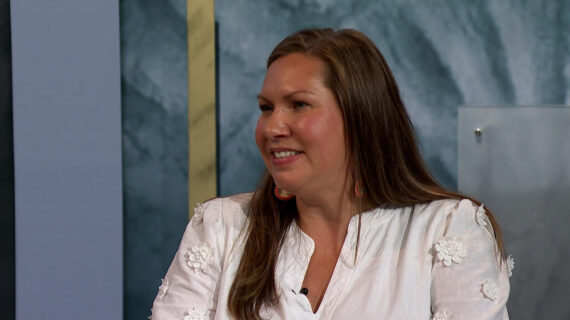
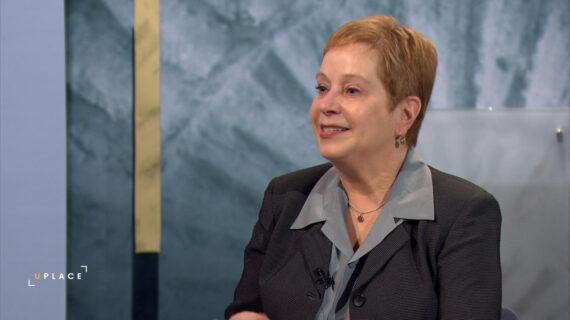

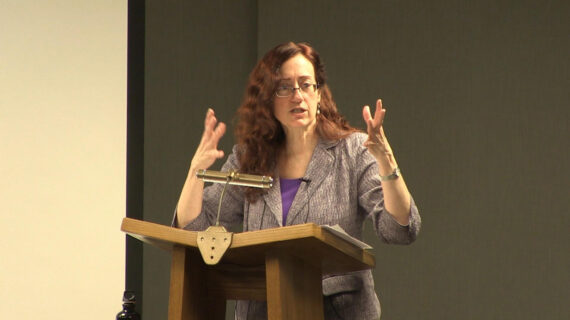

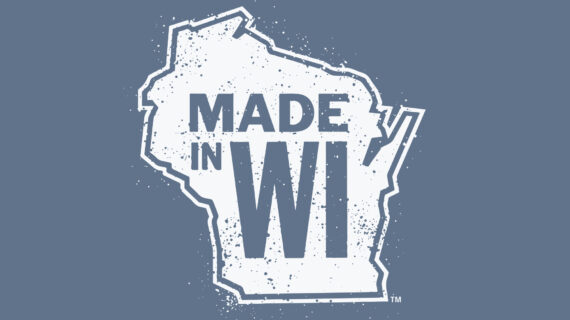
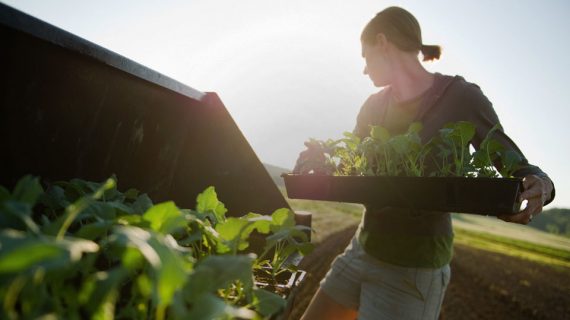
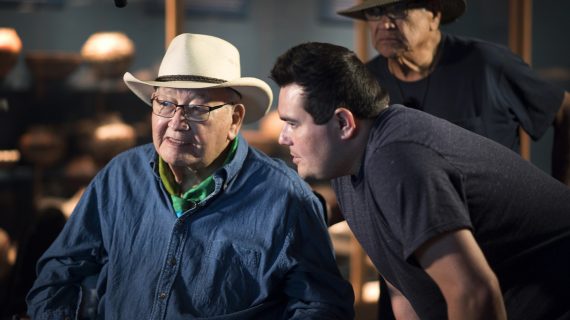



Follow Us